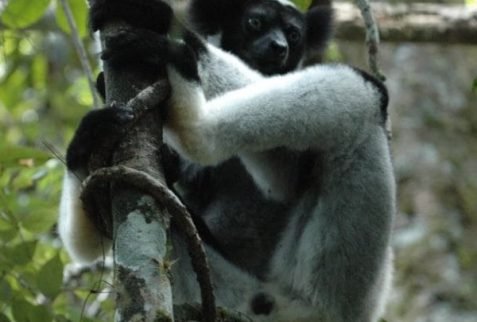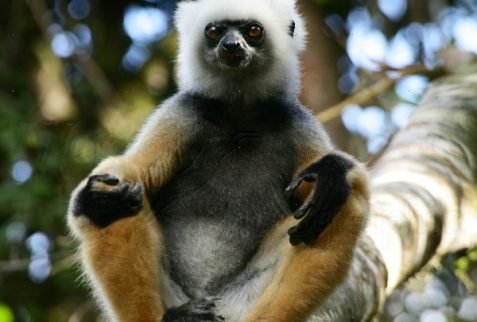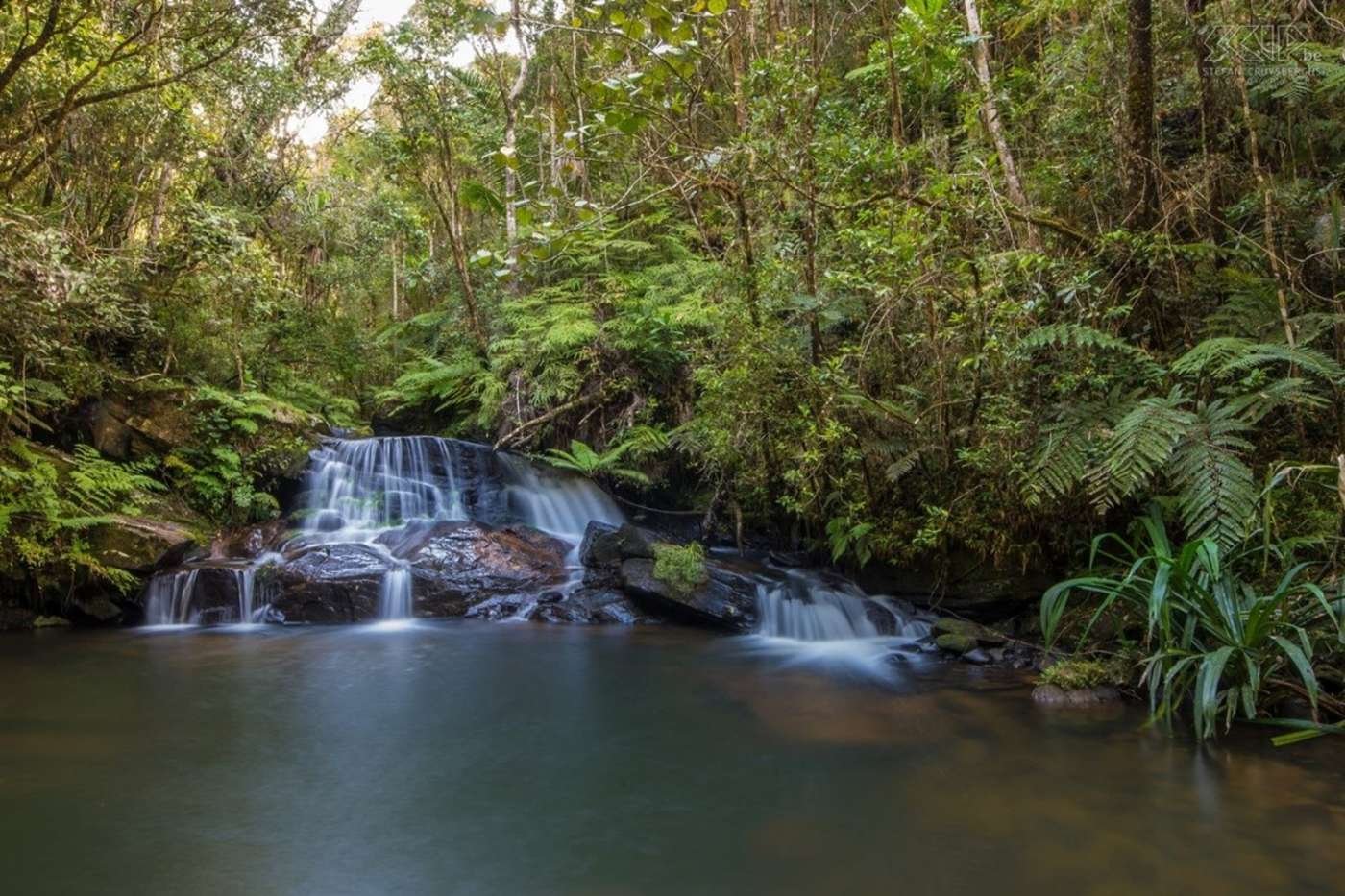🌿🎶 Discover the Enchanting Wilderness of Andasibe National Park 🐸🌳
Welcome to Andasibe National Park—Madagascar’s most accessible and arguably most magical rainforest destination! Just a few hours from the capital, this lush green wonderland is the perfect place to dive into the island’s rich biodiversity and meet its most famous residents: the singing indris! 🐵🎵
Whether you’re a first-time visitor to Madagascar or a seasoned nature enthusiast, Andasibe will steal your heart (and fill your camera roll 📸).
🌍 Park Overview
Located in Madagascar’s eastern highlands, Andasibe National Park (also known as Analamazaotra Special Reserve) is part of a larger network that includes Mantadia National Park—together forming one of the island’s best-protected rainforest ecosystems 🌧️🌲.
This park is a dream come true for wildlife lovers, especially those eager to meet lemurs, chameleons, frogs, and a whole choir of rainforest birds. And yes, you’ll almost definitely hear the hauntingly beautiful calls of the indri lemur echoing through the treetops 🎶🐒.
🕐 When to Go
🌤️ Best time to visit: April to November
This is the dry season, making it easier to hike and spot wildlife. The wet season (December–March) is lush and dramatic, but some trails may be muddy and leechy 🐛—so pack accordingly!
☔ Bonus: Even in the rain, the forest is alive with color and sound.


Andasibe National Park offer amazing community-driven conservation and ecotourism experiences 🌿🐒:
🌱 Mitsinjo Reserve – Conservation by the Community 🤝🌿
📍 Right next to Andasibe National Park
🎯 Run by a local NGO (Association Mitsinjo)
💚 Focus: Conservation, reforestation, eco-education
Why go?
- Great alternative to the national park, often less crowded
- Night walks are exceptional – best for spotting mouse lemurs, chameleons, frogs, and more 🦎🌙
- Amazing reforestation work and a frog conservation center 🐸🌳
- Supports local livelihoods and environmental education
Vibe: Super local, laid-back, and conservation-focused
🌿 VOIMMA Reserve – Forest by the People, for the People 🌳👣
📍 Just outside Andasibe village
👐 Community-managed by villagers
VOIMMA = Vondron’olona Ifotony Mitia sy Miaro ny Ala (“Local People Who Love and Protect the Forest”)
Why go?
- Very accessible, right near the village
- Great for short hikes and budget travelers 💵
- Rich in biodiversity – lemurs, frogs, birds, orchids
- Amazing night walks 🔦🐸
- Entrance fee goes directly to support the local community 🙌
Vibe: Intimate, authentic, and heartwarming
🌳 Maromizaha Reserve – The Secret Gem of the East 🌿🔍
📍 ~7 km east of Andasibe on RN2
🧪 Managed by local scientists & international researchers
A “new protected area” (Aire Protégée Nouvelle)
Why go?
- A bit off the tourist path = fewer people, more wild vibes 🌲
- Home to the diademed sifaka, black-and-white ruffed lemur, indris
- Scientific research hub—great for nerdy nature lovers 🔬🧬
- Supports conservation training and ecological research
- Excellent for longer, immersive treks
Vibe: Scientific, serene, and super biodiverse
🌲 Mantadia National Park – Andasibe’s Wild Big Sister 🦜🏞️
📍 ~1 hour north of Andasibe (by 4×4 recommended)
Part of the Andasibe–Mantadia complex
Why go?
- Wilder, larger, and more remote than Andasibe
- Less developed = pure nature experience 🏕️
- Spot rare species like the black-and-white ruffed lemur, diademed sifaka, and ground rollers 🐦
- Gorgeous waterfalls, old-growth forest, and giant ferns
- Great for serious birdwatchers and long hikes 🥾
Vibe: Wild, untouched, and deeply rewarding
💡 TL;DR – What’s the Difference?
| Reserve / Park | Managed by | Best For | Vibe |
|---|---|---|---|
| Mitsinjo | Local NGO | Night walks, conservation | Community-driven 🌱 |
| VOIMMA | Local community | Accessibility, short hikes | Local & welcoming 🤗 |
| Maromizaha | Scientists/Researchers | Quiet nature, rare lemurs | Off-grid & brainy 🧠 |
| Mantadia | National park | Wild treks, serious birding | Deep jungle explorer 🌲 |
🥾 Circuits & Trails of Andasibe NP
Whether you’re in for a chill stroll or a deep jungle trek, Andasibe has something for every level of adventurer:
1. Indri 2 Circuit 🎵🌿
The most popular trail! Perfect for spotting indris, Madagascar’s largest lemurs (with the voice of a whale and the leap of a ninja).
🕒 Duration: ~2–3 hours
Highlights: Indris, bamboo lemurs, sifakas, birds, frogs
2. Mantadia Circuit 🦎🌲
A bit more rugged and wild, this trail is in Mantadia National Park, about an hour’s drive from Andasibe village.
🕒 Duration: Half to full day
Highlights: Rare lemurs, waterfalls, orchids, deep forest vibes
3. Night Walks 🔦🌌
Want to see the forest come alive after dark? Join a guided night walk along the road or in adjacent community-managed forests.
Highlights: Mouse lemurs, chameleons, tree frogs, glowing fungi 😍
🌺 Flora & Fauna – A Rainforest Symphony
Andasibe is a biodiversity hotspot, and you’re guaranteed to spot fascinating species within minutes of entering.
🐾 Fauna
-
Indri indri – The main event! No tail, loud call, super expressive 🐒🎤
-
Diademed sifaka – Stunning golden-and-white lemur that moves like a dancer ✨🦘
-
Eastern bamboo lemur and common brown lemurs
-
Chameleons galore (including the colorful Parson’s chameleon) 🦎🌈
-
Frogs that look like tiny jewels 💎🐸
-
Birds like the Madagascar blue pigeon, velvet asity, and coua 🐦
🌳 Flora
-
Towering eucalyptus and native rainforest trees
-
Orchids (especially in Mantadia) 🌸
-
Medicinal plants and fascinating fungi 🍄
🎒 Pro Tips for Visitors
-
🎧 Listen as much as you look—the sounds of the forest are unforgettable
-
🧥 Bring a rain jacket (just in case… or definitely)
-
👟 Sturdy shoes and bug spray are your best friends
-
🎒 Hire a local guide—they’re wildlife-spotting superheroes 🦸♂️
-
🧴 Bring biodegradable soap & respect park rules (leave no trace!)
-
🕯️ Stay overnight in the nearby village for early treks and night walks
🛏️ Where to Stay
There are several eco-lodges and hotels in and around Andasibe village, ranging from budget bungalows to forest-luxury vibes. Many offer direct trail access and their own private reserves where lemurs roam freely 🙈🏡
🌅 Final Thoughts
Andasibe National Park is the perfect introduction to Madagascar’s wild heart—a place where misty mornings turn into wildlife-filled afternoons, and every tree hides a surprise 🦋🍃.
It’s a destination where conservation meets community, where you’ll not only see rare species but also support the people working to protect them.
So grab your binoculars, open your ears to the indri’s call, and get ready to fall in love with the rainforest 💚🌧️🐒
🌿🦜🦎🌺🌧️
